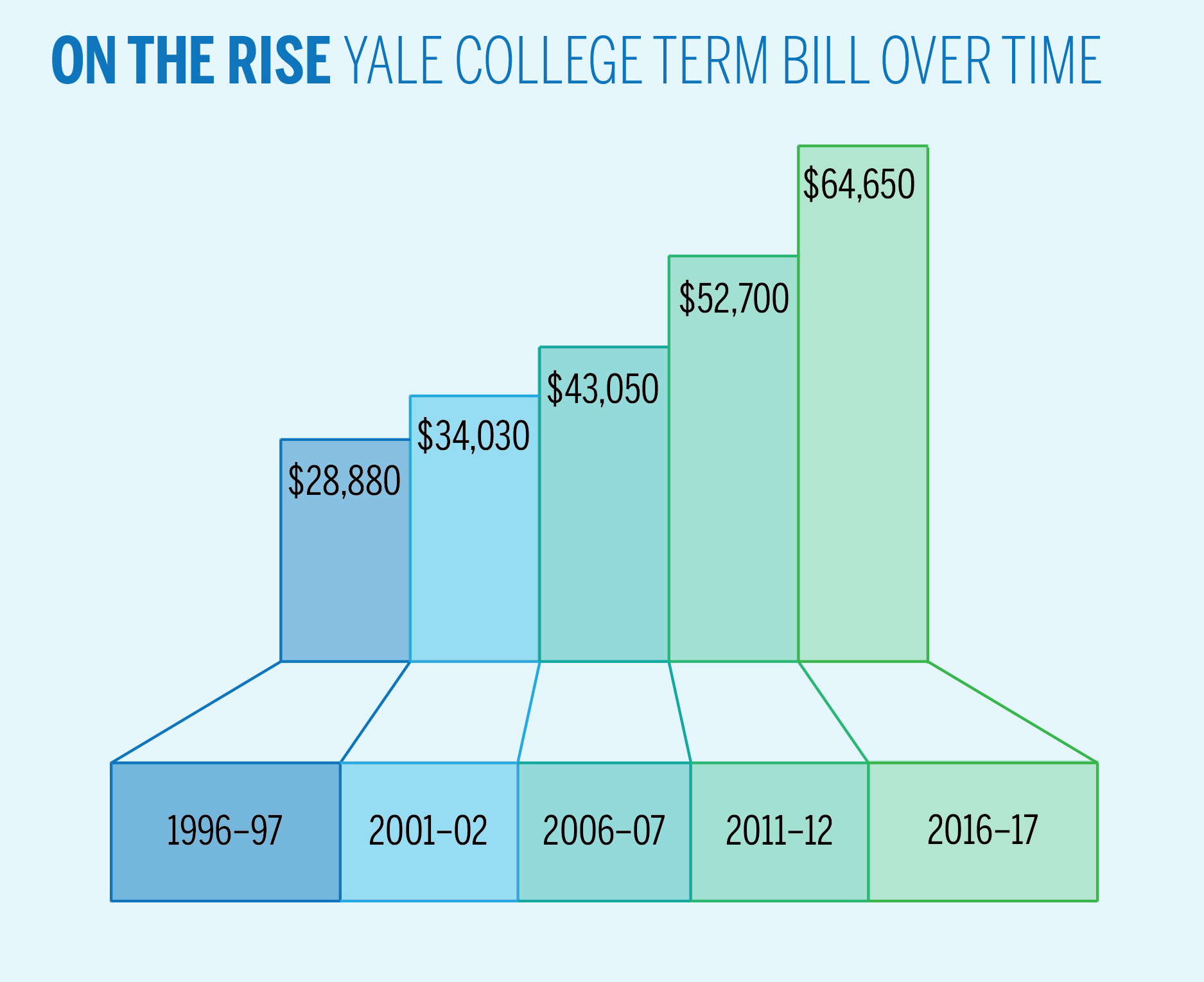
Yale College’s term bill will rise 3.9 percent, with the cost of attendance increasing from $62,200 to $64,650, for the 2016–17 academic year. While the undergraduate financial aid budget will also grow to accommodate the increase, costs will once again rise for many students.
The Yale Corporation approved the term bill increase at its most recent meeting, which took place the weekend of Feb. 13. The overarching term bill includes tuition as well as room and board, which will be set at $49,480 and $15,170 and increase by $1,880 and $570, respectively. This year’s rise in the term bill is essentially the same as last year’s increase of 4 percent, the rate at which the term bill has been increasing for the past several years. While Yale has embarked on several costly ventures in recent months, such as a $50 million faculty diversity initiative, Vice President for Communications Eileen O’Connor said these initiatives are “fairly unrelated” to the term bill’s increase, stemming instead from the rising costs of living and salaries of faculty and staff.
Over the past 20 years, the Yale College term bill has increased steadily. The cost of an undergraduate education was just $28,880 in 1996–97, as compared to $43,050 in 2006–07 and $64,650 for 2016–17. Although the price of a Yale education continues to rise, O’Connor said the University’s main priority is affordability.
“The objective is to try to keep the cost as low as possible but also to provide the proper education and research facilities that Yale needs to be a world class institution,” O’Connor said. “While the term bill went up, so did the amount of financial aid. That means that for most, Yale has become very affordable.”
Still, seven of seven students interviewed said they disapproved of the rising cost of a Yale education, with many citing an added burden on middle class families and the fact that the quality of a Yale education is remaining more or less the same while costs are increasing.
“The increases are bad because I don’t know how much the University is improving to raise it that much,” Nathalya Leite ’19 said. “The quality of the University should be going up if the cost is.”
Minsun Cha ’17 said because she is not on financial aid, her costs are going up without any benefit from improved aid offerings. She added that the University should make more transparent where the extra money is going, as the increasing cost of Yale is outpacing the national rate of inflation. Likewise, Kevin Kim ’18 said that without knowing where the additional funds will be spent, it seems like the administration is raising the term bill simply because it can.
University President Peter Salovey said in determining the term bill increase, the Provost’s Office works with Vice President for Finance Stephen Murphy ’87 to gather data on the “actual cost” of an undergraduate education and then formulates a proposal. The proposal is vetted first by the finance committee of the Yale Corporation followed by a vote of the entire body, which can adjust, approve or delay it, he said.
Salovey also emphasized that increases in the full cost of a Yale College education are met by improved financial aid offerings.
“It’s important to remember that increases in the term bill are accompanied by proportional increases in financial aid so that any changes in the term bill do not increase the financial burden of the families of students receiving financial aid from Yale,” Salovey said. “We generally have the goal of keeping increases as modest as we can. They reflect real increases in the expenses associated with teaching, housing and feeding students.”
In December, the University announced that it would direct an additional $2 million next year toward financial aid spending to reduce the student effort, a yearly sum that students on financial aid must contribute to their education. The student summer income contribution — the portion of the amount expected to be earned from a summer job — is set to drop next year from $3,050 to $1,700 for students with the highest need, and $2,600 for all other students. The term-time student employment expectation remains at its current value of $3,350 for upperclassmen.
Director of Financial Aid Caesar Storlazzi said the increased financial aid budget will come from a combination of “restricted endowment funds, current gifts and general University funds.”
O’Connor said tuition is actually not a large part of the University’s overall budget, which also draws on funds from the endowment and outside contributions. In 2015, funds collected from tuition represented around 16 percent of the University’s total income, according to data from the Office of Institutional Research.
This year’s financial aid budget is $122 million.







